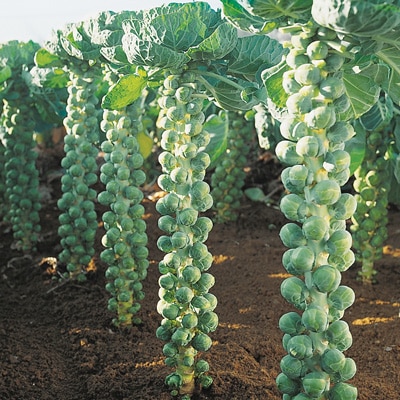
Get In Touch
Location
Plot 379, Industrial Area, Phase II, Chandigarh-160002, India

The demand for foreign vegetables is increasing in India, especially in five-star and other hotels, where these vegetables are sold at higher prices due to the increasing number of tourists. Cabbage vegetables like Brussels sprouts are also part of this demand, which are grown in mid and high mountain areas and can provide good income to farmers.
Brussels sprout is a cabbage vegetable, whose small tops grow along with the stems and they look like small cabbages. This crop is ideal for growing in middle and high mountain areas. First its nursery is prepared and 4-5 week old seedlings are planted in the field for transplantation. Its improved varieties include Hilge Ideal and Rubene.
These vegetables are grown in cold temperatures, due to which the environment of hilly areas is favorable for them. In other parts of the country, they are planted in winter and are produced till December-January. In hilly areas, exotic vegetables can be grown twice a year, between March–June and July–October. The crop grown in March gives more profits because it is off season.
According to ICAR, after preparing the field, cowdung manure, super phosphate, full amount of potash and one-third amount of urea should be added. The remaining urea should be applied in the field after one month. After preparing the nursery, 4-5 week old plants are planted in the field.
Weeding should be done at least once in the initial stages of crop growth, which loosens the soil and provides adequate air access to the stems. This keeps weeds under control. Irrigation should be done every week. This crop is sensitive to the acidity of the soil, which can cause many disorders. Adding lime is beneficial to prevent these disorders.
When the sprouts become approximately 3-4 cm round, they should be removed from the stem. Its average yield is 100 to 150 quintals per hectare (8-12 quintals per bigha).
Stay connected with Mera Farmhouse for new information related to agriculture.